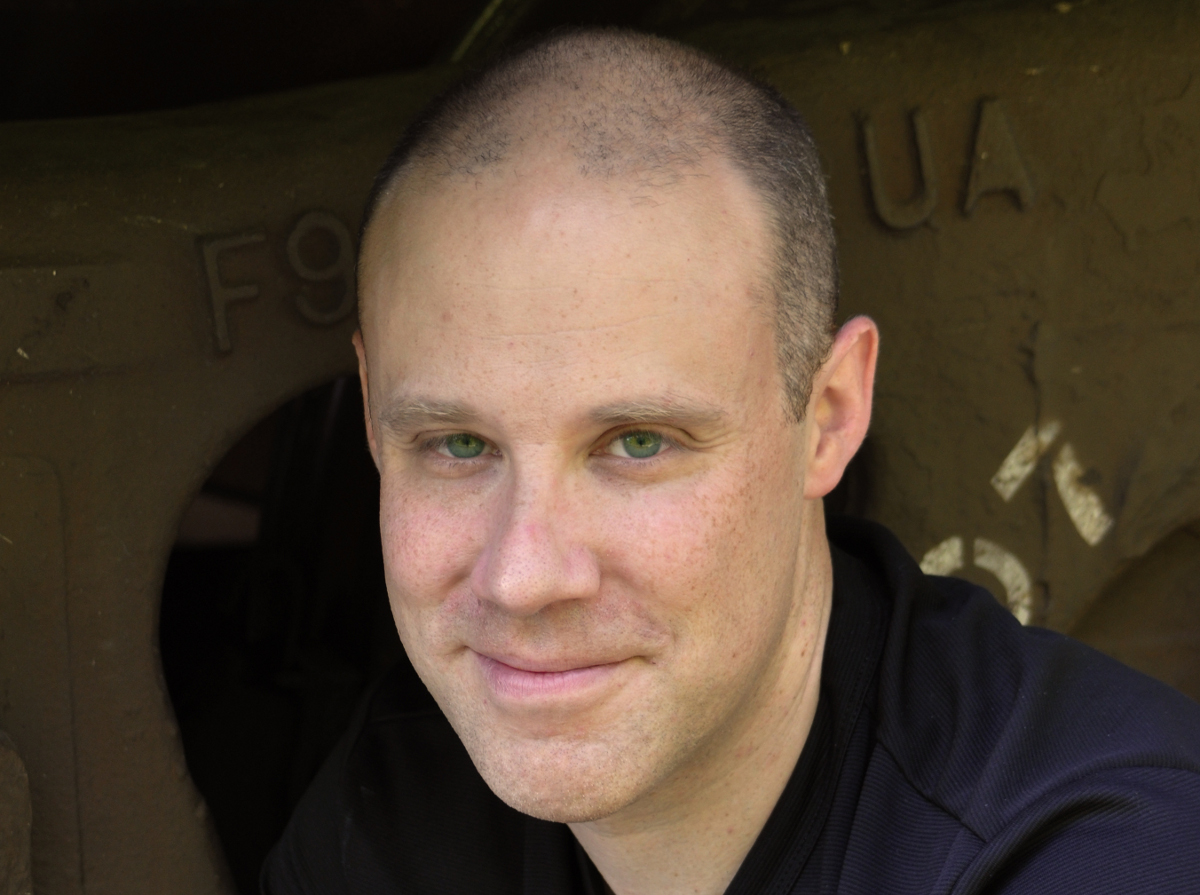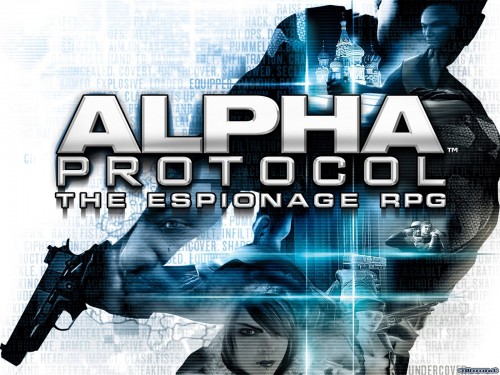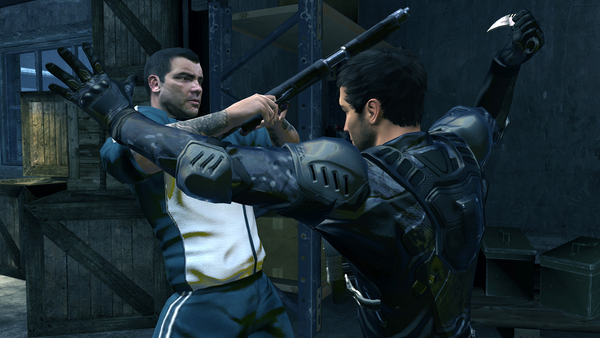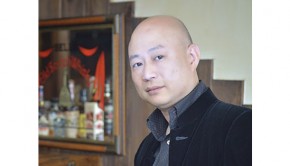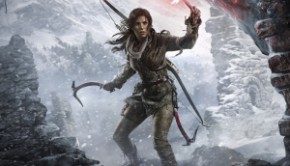Alpha Protocol Developer Diary
Article Written by Sound Director Alexander Brandon
The tale of audio on Alpha Protocol. Draw your chair close to the fire and gather round. This is no story with a hammy, improbable plot. This is as real as it gets. I’m emoting for all I’m worth. No matter what your discipline, I hope you will emerge from this account either a wiser game developer or a bemused layman.
I started working at Obsidian Entertainment in April of 2007 after a nearly four year employ as audio director of both internal and third party divisions at Midway in San Diego. Josh Sawyer (designer extraordinaire with latin phrases tattooed on the inside of each forearm), and David Kunkler (whose name is suspiciously close to Dave Kunkle, editor of Electronic Games magazine), whom I had worked with at Midway, were now at Obsidian working on several new projects and said an audio department was something needed. Despite the great people I worked with at Midway, the projects grew tiresome, mainly because begging for the technological capacity to loop an audio file was not something I was accustomed to, yet budgets were that tight. Oh yes, they really were. No fault of the producers, the budgets were handed down from on high. Thus I offered my services to Obsidian (specifically Chris Parker, excellent fellow) and after a very short negotiation was given an offer to come aboard.
I knew about Obsidian but one never really gets to know a company better than actually working there. The company was based in Santa Ana at the time and needed an audio department built from the ground up. Having done this at Ion Storm with Warren Spector, it wasn’t a big deal to do it again, but it would be over a year until a bonafide studio suite was built. And I still owe Feargus Urquhart a debt of gratitude for allowing a great studio to be built at their current location in Irvine (only a few blocks from Blizzard). In the meantime what was required was a lot of work done on two projects. First, closing out an expansion pack to Neverwinter Nights 2 (Mask of the Betrayer), which took many a day and night of crunching. In addition, there was a project just exiting pre production: Alpha Protocol. In addition, Aliens RPG was in mid pre production. I couldn’t be more excited. Dungeons and Dragons, an espionage RPG, and something in the “Alien” franchise. It was a dream come true.
Now for the details. I feel Alpha Protocol was and is a very well done product, just with a few bumps along the way. People ravage even slightly dated graphics with all the ferocity of a pack of ravenous wolves expecting roast pheasant for every meal. Given that it was the company’s first console product quite a few lessons were learned. But the owners and directors are all very intelligent, and even through revisions and requests from Sega, the publisher of Alpha Protocol, wise decisions far outweighed mistakes. One of the biggest hurdles of any developer is using third party technology and trying to guess how much work it will save them from programming an engine on their own from scratch. It is never as little work as one imagines. That goes for audio, also.
The goals of audio were like any other project: establish thematic and stylistic direction, execute content that blended with gameplay, and make the right focus points pop for the player. A design document and sound asset list were created, in Microsoft Word and Excel, respectively. References were used, listening sessions scheduled, and meetings were held to ensure everyone was on the same page. It is all too easy for some idiot to make an outlandish music request mid-project, and establishing these things out of the gate at least limits that sort of divergence. The first set of references consisted of music drawn from BT (his more earlier techno themes than his later glitch and melodically driven pieces). BT as an influence was there from the start and eventually he wound up writing the main theme, which we’ll get to later. Library sounds were in place as well for footsteps and gunshots. Early demos showed a combination of mini game and action third person shooter mechanics combined with heavily scripted cinematics.
With BT leading the way, the design document outlined music as a combination of orchestral and electronic, which admittedly has been done to death, but in this case several things worked perfectly to convince the team and myself that it was still a good idea. One of those things was a demo submitted by Rednote Audio, which was brilliant and which I retooled and cut to match a cinematic segment of Mike jumping out of a plane and wrestling a parachute from a terrorist leader, then saving a hostage. The music fit the scene like a glove… suspenseful as the leader holds the hostage at gunpoint, and gradually building as Mike looks out of the back of the plane after the leader dives out. When you actually choose to jump, the music builds and hits its climax at the exact moment Mike leaps out and begins a tense high tempo electronic frenzy with heavy horn and percussion punctuated accents. A Pungi (Kalbelian wind instrument) accents the middle eastern implied nature of the terrorist leader as well as your location.
God it was a beautiful moment for game music. And mid production, the scene was cut. Granted I was disappointed, but from a gameplay perspective it would have been the only place where such a minigame was present, and would jibe with the rest of the design. This stuff happens. Get over it. So I cried a bit and moved on to other areas.
For sound design, halfway through my work at Obsidian we hired Fryda Wolff as a technical sound designer. Near the end, Scott Lawlor was hired as an additional sound designer, and Scott also turned out to be my replacement and the guy who would wrap up Alpha Protocol. Fryda did a fantastic job and was brilliant with smacking programmers on the back of the head when she needed support for things like particles, which at the time in the Unreal engine didn’t exist natively for sound hookup. Quite a few things didn’t actually, but such is the nature of the beast. Thankfully Zak Belica is onboard at Epic now to manage fleshing out the engine to be more competitive as a standalone piece of middleware rather than something that requires Wwise or FMOD to shore up issues. Still and all, Fryda combined her skill of sound design, implementation, and VO and contributed a lot of fantastic work to the game.
I’m meandering. Back to music. At first, before Rednote was brought onboard we considered Geoff Zanelli for the composer and had lunch with him to discuss his interest and ideas. Geoff is part of the Radar group (the spinoff of Media Ventures created by Hans Zimmer) and has done cues for such films as The Pirates of the Caribbean: At World’s End. He was fantastic and psyched about the possibilities. Sadly though, contractual issues prevented us from moving forward. That tale is best told in an article itself about the differences between the game industry and the film industry and managing expectations, which I will write up for Gamasutra one of these days. So another disappointment but one that was rectified with a deep apology to Geoff (I still want to hire him!) and the next best demo being Rednote’s, consisting of Jason Graves and Rod Abernethy. I’d worked with them before onGauntlet: Seven Sorrows and had a great experience with them, so off we went. They created a ton of brilliant cues.
We didn’t just throw requests over the fence, either. Each level had a flowchart made in Visio of what the player did and how it would map to a loop or a stinger music cue. Both Jason and Rod flew out and met with myself and the team and we had extensive discussions about planning. I had to divvy each level’s flowchart up and figure out how to create cues that would complement each level for roughly 70 minutes of music, 15 or so of which were recorded live up in Seattle with the Northwest Sinfonia. Each and every single game I work on from this point should have the same workflow. It made the soundtrack customized just for the right places. Having said that, there’s a lot of revision, cuts, and changes that take place on a game project, and retrofitting existing cues needs to be in your blood or you’re in real trouble. Fortunately, each location in the game had its own stylistic and instrumental requirements, and we were able to swap back and forth to make things work properly. Scott continued that technique after my departure a year and a half before the product shipped.
Back to sound. From establishing reverb zones to making submachine guns fire properly to lovingly edit radii around an exterior building light with just the right buzz, implementing sounds was really not that bad in vanilla Unreal, which is what we worked with. Some folks were shocked I hadn’t insisted on Wwise but early on Chris Jones, the CTO explained there wasn’t that sort of amount in the budget. I had over ten years of experience with the Unreal engine at this point, having started on the originalUnreal itself, so I said I could make do, albeit some programmers would be spending some time fix a few of the issues (such as the aforementioned particles). I’m fairly sure the programming time on sound would have outweighed the cost of Wwise. But, even with Wwise you still need programmer hookup. So a true cost / benefit analysis is important before making such a decision and it is definitely difficult to make a precise estimate, since game design shifts may totally change the requirements halfway through a project.
We did all the fun things, from distance crossfading (even in VO for AIs, which was great, hearing mids only in the distance round out as they approach was fantastic) to reverb zones to the odd bit of occlusion and Low Pass Filters. The maddening bit was that sound cues could not have their properties edited en masse until about a year into production. But I must give credit to Mike Larson for his assistance throughout. You always make do.
For voice the process was even more intense. The story was rewritten almost entirely halfway through the project, and even though we only had a fraction of the lines in such a project as The Old Republic, nearly each conversation had its own table read, which I loved but which also was a huge time sink. Nevertheless Chris Avellone was a big proponent of it and I was so thankful that the team took time to organize and attend the table reads (I only participated in about half of them at most, and the same goes for the actual recording sessions, but I’ll get to that in a minute). Table reads allow lines to be real and not just read off the page. The team understands them and whoever goes to the recording sessions with the actors is already intimate with them and can provide solid and collective direction.
The lines were recorded at Womb Music in Hollywood. It was here that I learned that the current system for voice over is utterly archaic. The recording quality was great, casting was mostly spot on. But it was mostly a waste of time. For Storm of Zehir, another expansion pack on Neverwinter Nights, we recorded with a studio in the valley called Zro Limit, but we NEVER DROVE UP. Not even once. We did it all through Skype and it was incredibly convenient. The audio came straight from the board into our Genelecs and sounded like we might as well have been at the session. We provided direction and things went great, and we saved hours, even days of travel because of it. On Alpha Protocol, most of Ryan Rucinski’s time was spent travelling back and forth to Los Angeles to attend the voiceover sessions. Such a waste. Nevertheless, the story ended up being one of the game’s strongest points with reviewers. Avellone strikes again. A master weaver of plots and factions. His sarcasm is also frighteningly good. In person as well as in his dialogue.
I’ll close out with a record of music direction with BT. The title theme was eventually decided to be written by BT (Brian Transeau) and the orchestral parts in Seattle (BT brought Blake Lewis to the session, which was cool), and finally mixed in 5.1. BT is super guy to work with. He sounds like he has blood type espresso and is psyched about everything, but not egotistical. He has strong opinions about various aspects but also takes direction very well. For example, the horn melody for the main theme completes the first statement by going a half step up, which sounds to me somewhat disturbing. I asked him to remove it but he wanted it in there. Nothing was going to stop that half step note from going in. But, he revised the theme at least five times throughout the project until it showed the right combination of BT-isms (glitch edits, micro tones and such) along with a strong thematic statement and an overall feeling of power as we had requested. In addition, Jason Graves took it in hand and wrote some bars that BT left in, which needless to say made Jason quite the proud composer. It took a while to get the final version. At one point BT’s rig blew up. Not kidding, he was talking on the phone about his Apogee interfaces smoking. Through all that he pulled it together handsomely. The theme turned out amazingly well.
Despite some reviews glossing over the soundtrack and even audio in general, I still consider it one of my favorites. If the graphics take a hit then the sound at times can’t help the experience. I honestly think people take graphics too seriously these days. Through it all, Scott Lawlor creates a MEAN Mac-10 sound and closed out the project with some amazing touches such as the intro sequence with the old Sega logo theme, and the heavily edited, heart stopping gunshot sound. He even used a stinger I wrote with some harp arpeggiation as the “end of level” theme and it fit that use like a glove, so that guy is going places as an Audio Director. Having left Obsidian to work in Austin (where my family and I decided we belong), I do miss the place and the people, and am looking forward greatly to their future products, particularly Fallout: New Vegas, since they started that franchise, after all.
In the meantime, go buy Alpha Protocol. Screw the reviews!
Posted on October 27, 2009 by Chris Greening. Last modified on April 26, 2014.

